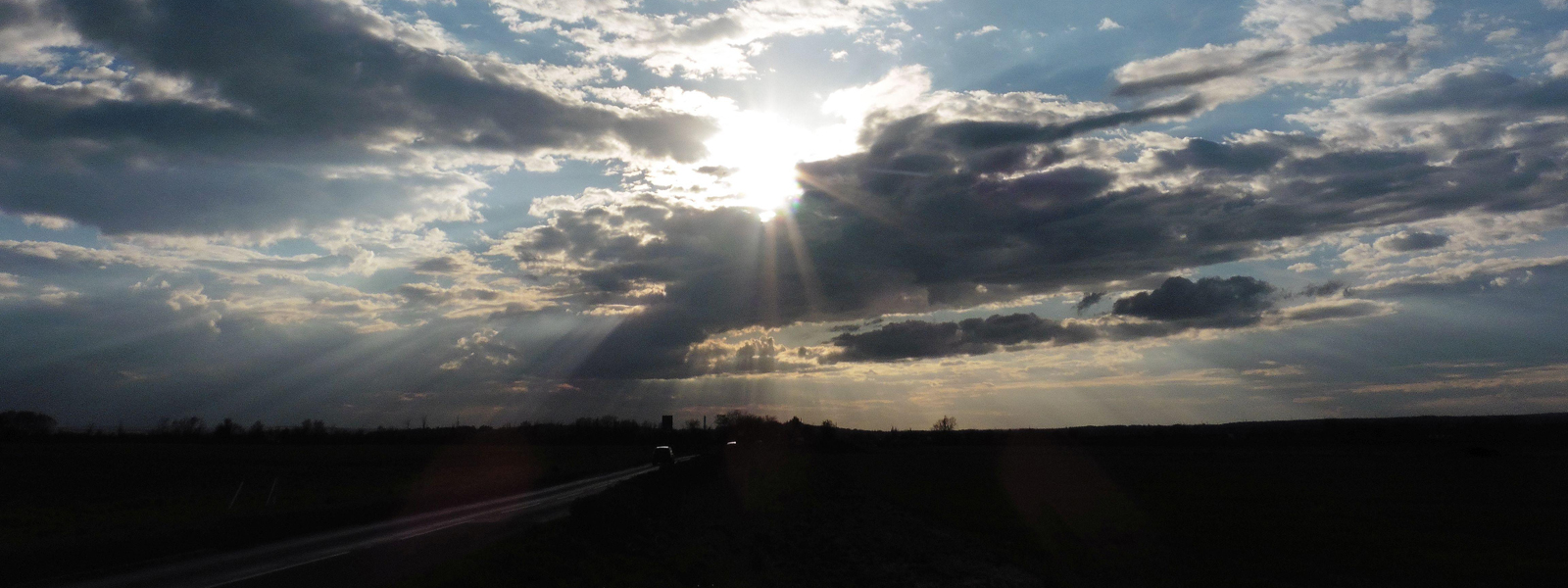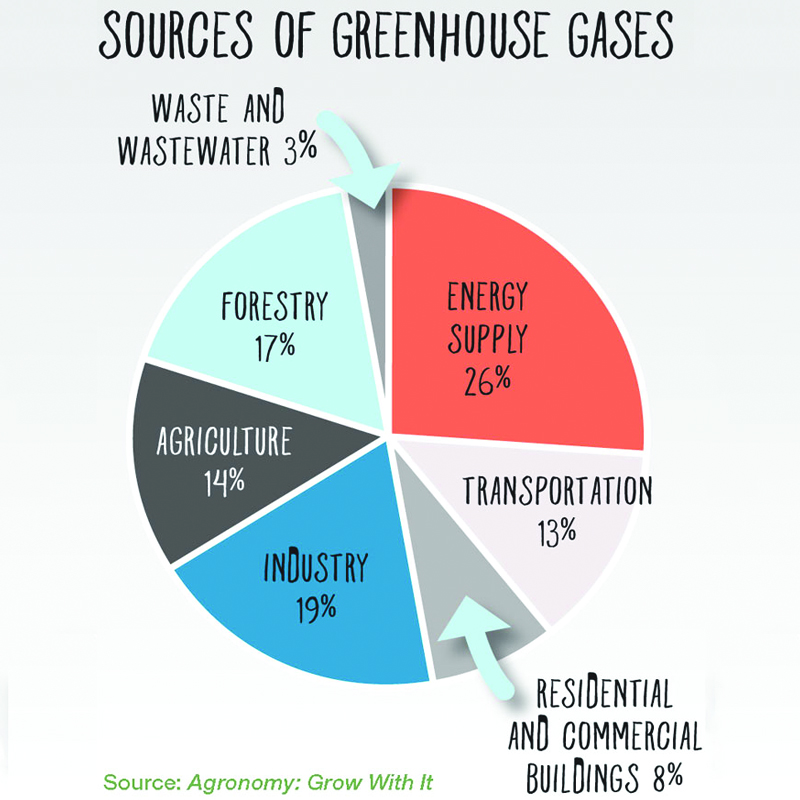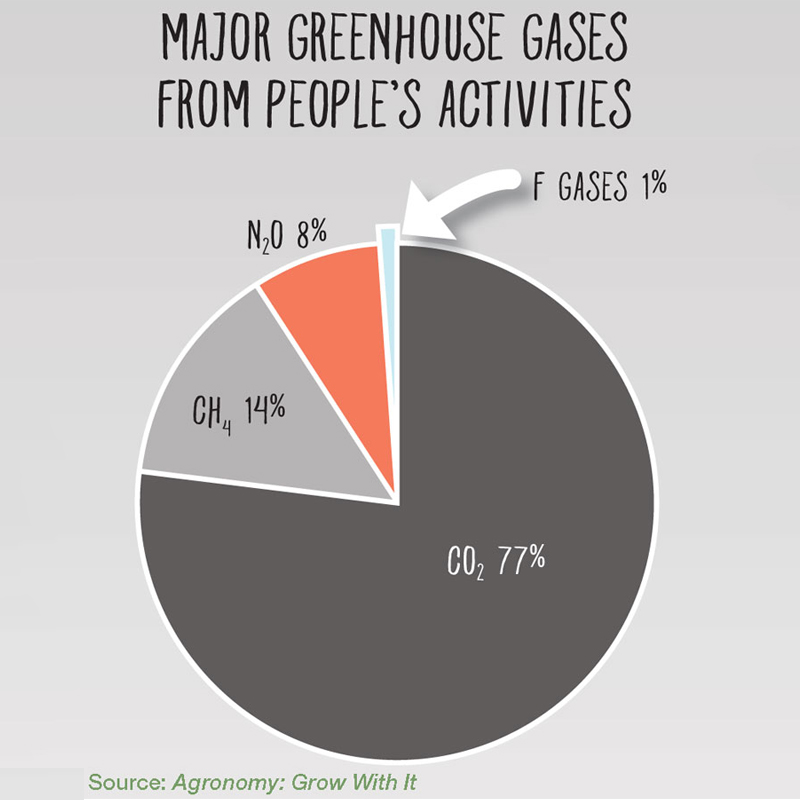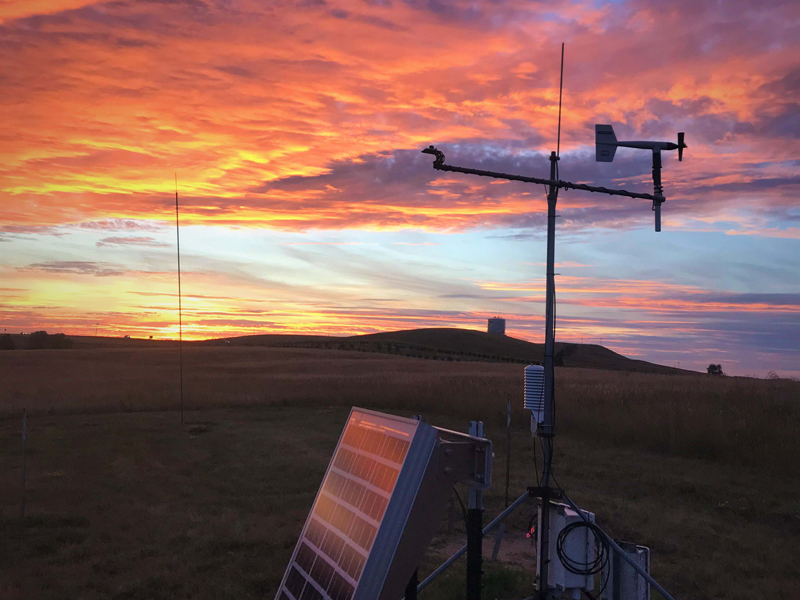
Climate Change
Climate Change
Earth’s average temperature has risen about 1.5°F since 1880. That might not seem like a lot for humans, but for plants, soil microbes, and other living things it’s a big difference. In addition, weather patterns are changing, with an increase in large, destructive storms. There are an increasing frequency and intensity of droughts and floods worldwide.
We know changes in climate will affect agriculture. However, we are uncertain about the extent of these changes. Floods and droughts can destroy crops. Higher temperatures can cause reduced yields in crops because of increased plant stress and water use. Climate change may make the challenges of weeds, damaging insects, and plant diseases worse.
It has been suggested that humans are changing the Earth’s climate by adding greenhouse gases to the atmosphere, trapping heat from the sun. These human-made changes come from supplying fossil fuel energy to transportation, industry, homes, and businesses (one of these businesses is agriculture). All these human activities tend to create greenhouse gases.
Let’s take a look at three greenhouse gases: carbon dioxide, nitrous oxide, and methane.
- The majority of the greenhouse gases are carbon dioxide (CO2). In nature, plants use carbon dioxide during photosynthesis and disperse oxygen in the process. Humans need this oxygen. In return, we breathe out a combination of gases that include carbon dioxide. Changes in land use can impact plants’ role in this natural cycle. Additionally, activities like burning fossil fuels in vehicles and power plants increase carbon dioxide. The result is an imbalance in the carbon dioxide cycle.
- The use of nitrogen fertilizers has led to an increase in the amount of nitrous oxide (N2O) in the atmosphere. Nitrogen is a vital nutrient for crop growth, and nitrogen fertilizers have helped farmers and agronomists feed the world’s growing population. This is a challenging area. Read more about the use of fertilizers.
- Methane (CH4) is another greenhouse gas. Many people attribute the growth in methane levels to animal production systems–and this does play a part. There’s more to it, however. The rice plant, grown as a staple around the world, also produces methane.
Improved agricultural practices can help reduce the amount of greenhouse gases going into the atmosphere. This could lessen or slow predicted climate changes. Agriculture and the work agronomists do is at the center of this concern.
- Plants use carbon dioxide from the atmosphere to build tissue through photosynthesis. Since higher levels of carbon dioxide in the atmosphere give plants more of what they need, growing plants—and encouraging the storage of carbon in the soil—can be part of the solution.
- Agronomists are finding ways to help plants adapt to the changing climate. They are studying the impact of heat on staple crops, such as wheat. They are looking at more efficient ways to use water. Crop breeders are also developing plants better able to tolerate higher temperatures and periods of drought. Watch a video about a crop scientist studying drought.
- Agronomists are also working to reduce greenhouse gas pollution. Precision agriculture can help farmers use nitrogen fertilizers more efficiently. With the use of drones and other technologies, growers collect data about the entire farm. The grower can then determine that one location of their land needs a certain amount of fertilizer, while another might need much less–or none. This will help reduce fertilizer use while maintaining or even increasing yields. Watch a video about a precision agronomist.
- Crop breeders and animal producers are looking at ways to improve animal feed and forage practices. Better feed could work with animals’ digestive systems to reduce methane production. Researchers are also finding ways to store and use manure in ways that reduce the release of nitrous oxide.
- Farmers can adopt conservation practices such as reduced or no-tillage and the use of cover crops. These practices allow plants to take more carbon dioxide out of the atmosphere and store it in the soil.
Changes in the Earth’s climate will assuredly change food production. But history has shown that the agriculture sector is nothing if not adaptable. Agronomists provide the scientific know-how to find and share the best on-farm solutions for a changing planet.



